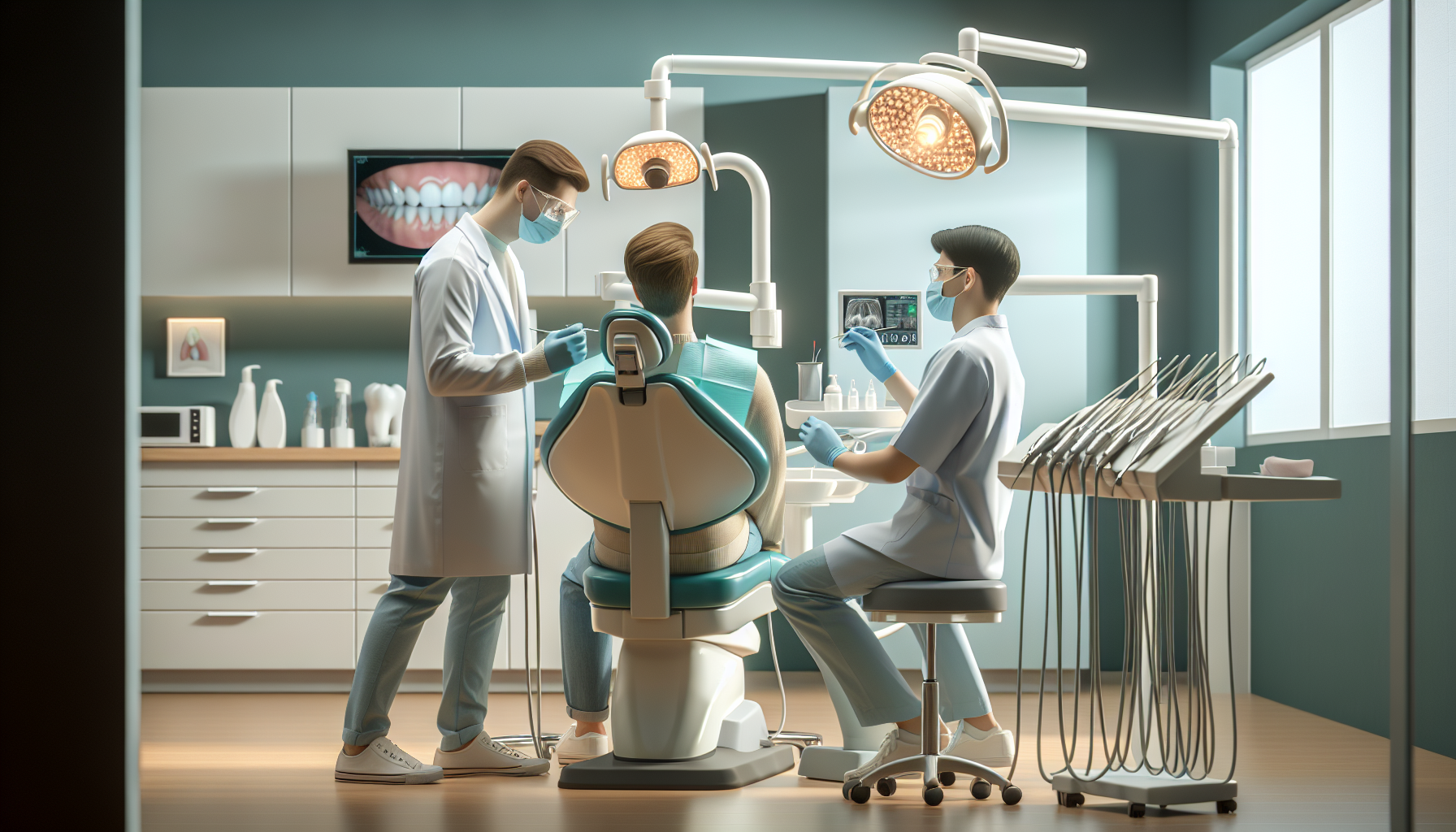Medicare Court Ruling Eases “Same Time, Same Dentist” Rule
Discover how new Medicare rulings can reshape healthcare practices—and learn how small daily habits build big results in your professional life through The Habit Method.
Introduction: Major Shift in Medicare Dental Coverage
A recent federal court ruling has introduced an important change to Medicare’s dental regulations, specifically easing enforcement of the long-debated “same time, same dentist” rule. This decision could have widespread implications for dental professionals, Medicare beneficiaries, and administrators who manage billing and compliance.
Under the ruling, the court found that rigid application of the rule unfairly restricted certain coverage situations. For dental and medical professionals working together to serve patients—especially older adults—the change represents a welcome shift toward flexibility and patient-centered care.
Understanding the “Same Time, Same Dentist” Rule
The “same time, same dentist” rule regulated when and how Medicare would reimburse certain dental services performed in conjunction with medical procedures. Historically, it required that the dentist performing the procedure be the same provider treating the patient at the exact time and in the same setting to qualify for reimbursement.
While this might have seemed clear-cut on paper, in practice it created challenges. Hospitals and dental clinics found it difficult to coordinate care when scheduling constraints or medical emergencies required separate providers. Patients often faced delays or denials in coverage simply because their care did not fit into the narrow definition set by the rule.
The Federal Court Ruling: What Changed
In a recent case challenged before the District Court, the judge ruled that Medicare’s strict enforcement of the “same time, same dentist” provision was inconsistent with the intent of the law to ensure necessary medical and dental coordination for patient health. The court’s decision clarified that Medicare may not automatically deny claims that involve collaborative care between dentists and medical teams, even if the timing or provider slightly varies.
Key points from the ruling include:
- Flexibility in care documentation: Claims should be evaluated based on necessity and outcomes, not just on timing or provider uniformity.
- Recognition of multidisciplinary care: Collaborative treatment involving dentists and physicians now falls within a broader interpretation of allowable reimbursement.
- Greater clarity for compliance teams: Providers have clearer justification for including dental services in overall medical treatment plans for specific conditions.
For many practices, this relaxation means fewer administrative denials and more opportunity to coordinate comprehensive care.
Impact on Medicare Beneficiaries
For patients—especially seniors—this decision directly improves access to oral health services that are medically necessary. Medicare beneficiaries who previously faced denials for dental work done near or during hospitalization now have a better chance of coverage approval.
Examples include:
- Hospitalized patients needing dental clearance before cardiovascular surgery.
- Seniors requiring coordinated care between a hospital oral surgeon and a regular dentist.
- Patients undergoing cancer therapy with dental complications tied to their treatment.
The new interpretation encourages continuity of care, reduces out-of-pocket costs, and recognizes the integral connection between oral and systemic health. As one oral health advocate noted, “By acknowledging dental care as part of whole-body wellness, this ruling moves us closer to ensuring equitable access for millions of seniors.”
Medicare Advocacy Organization
Benefits for Dentists and Medical Providers
For dental professionals and medical teams, the ruling creates an opening for stronger collaboration and more consistent reimbursement. It highlights that quality of care—not logistics—should drive coverage decisions.
- Improved coordination: Dentists and physicians can schedule procedures based on patient needs rather than compliance concerns.
- Administrative relief: Billing departments face fewer rejected claims and less ambiguity in coding combined treatments.
- New care models: Integrated care centers can use this as an opportunity to strengthen cooperative relationships between dental and medical departments.
To maintain compliance, practices should ensure precise documentation of why a dental procedure was medically necessary within a patient’s treatment plan. Helpful resources include guides on Medicare dental billing compliance and regulatory updates.
Advocates and Policy Experts Weigh In
Healthcare policy advocates and dental associations have praised the decision for advancing patient-centered care and promoting oral health equity. Many experts consider this ruling a first step toward comprehensive Medicare dental coverage—something long sought by oral health coalitions.
As one policy expert explained, “The court recognized that the goal of Medicare is to ensure necessary care, not to enforce arbitrary timing rules that burden patients.”
Health Policy Analyst, 2024 Oral Health Forum
This shift aligns with broader federal discussions on integrating oral health into total wellness frameworks. It also sets a precedent that could influence future Centers for Medicare & Medicaid Services (CMS) policy language.
What This Means for the Future of Oral Health Coverage in Medicare
Although the ruling does not create new benefits, it indicates growing recognition that oral health is inseparable from general health. If future legislation expands on this interpretation, Medicare could eventually include more dental coverage categories.
Policy analysts predict possible next steps:
- CMS issuing detailed guidance clarifying the acceptance of multidisciplinary claims.
- Congress exploring pilot programs for preventive dental services within Medicare Parts B or D.
- Expansion of patient education initiatives explaining coverage rights under the new decision.
These advancements would support a more integrated approach where oral and medical providers collaborate openly—bridging a gap that has existed for decades in U.S. healthcare policy.
How Patients Can Take Advantage of the Ruling
Medicare beneficiaries can take proactive steps to benefit from this change:
- Discuss your needs: When facing procedures that involve dental and medical overlap, speak with both providers about submitting coordinated claims.
- Document necessity: Ensure medical necessity is clearly stated in all paperwork. This increases the likelihood of coverage approval.
- Review claim information: Double-check that both dental and medical billing codes reflect the correct treatment context.
- Consult an advocate: Nonprofit groups like the Center for Medicare Advocacy can help explain the revised rule and assist with appeals if claims are denied.
For more guidance on navigating coverage, visit Understanding Medicare Coverage for Dental Care or explore our resource on common billing mistakes to avoid.
Conclusion: Moving Toward Integrated, Patient-Centered Oral Health Care
The easing of the “same time, same dentist” rule is a meaningful step toward integrated healthcare. It recognizes that oral health supports total wellbeing and that flexibility in care coordination helps patients receive the treatments they truly need.
For dental professionals, now is the time to review internal billing policies, strengthen collaboration with local hospitals, and educate patients on how these changes open doors to more accessible care.
Your daily habits define your long-term success—discover methods for building lasting improvements in both practice management and personal growth with The Habit Method.
Frequently Asked Questions
1. What is the “same time, same dentist” rule under Medicare?
It was a policy that required the same dental provider to perform all related services during one patient visit to qualify for Medicare reimbursement. The recent court decision softened this requirement, allowing for coordinated care between multiple providers.
2. How does the new interpretation benefit Medicare beneficiaries?
Patients can now access medically necessary dental care in coordination with other physicians, improving treatment continuity and reducing coverage denials.
3. Must dentists modify their billing procedures right away?
While no immediate change to billing codes is required, dentists should align documentation with the ruling—focusing on medical necessity rather than timing.
4. Will this ruling lead to broader dental coverage under Medicare?
Though not a policy expansion, the decision signals legal and legislative openness toward broader reform in Medicare dental benefits.
5. Where can practices find official guidance to ensure compliance?
Dentists can consult CMS updates, industry publications, or professional resources like guides on Medicare dental compliance for detailed information on implementing the ruling.
Post Disclaimer
DentalUp is for educational purposes only and cannot accept personal dental information such as x-rays, photos, or treatment details. See full disclaimer here.





